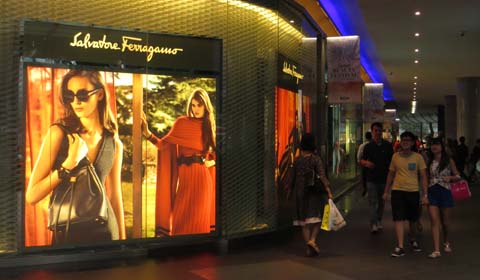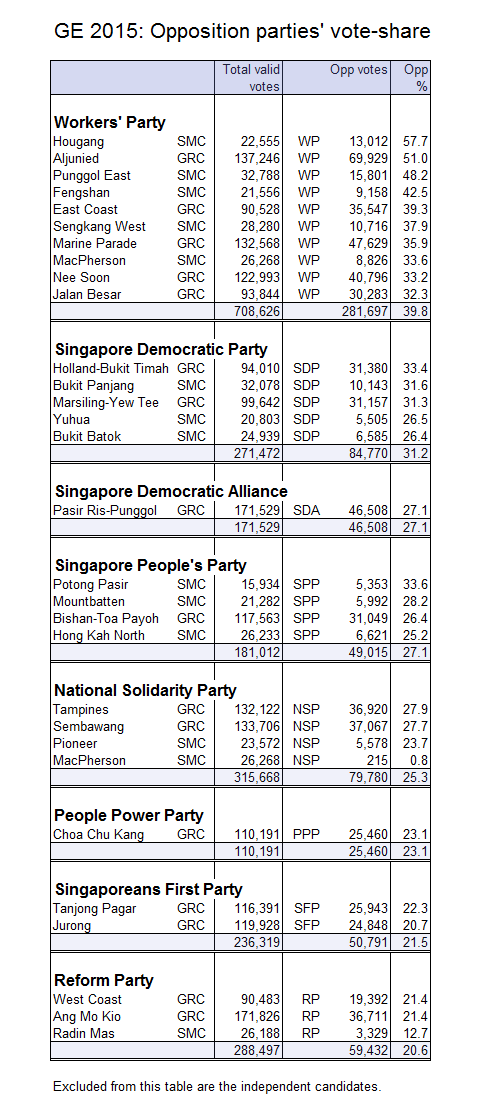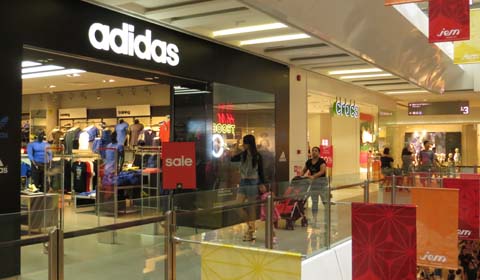https://yawningbread.wordpress.com/...ties-withstood-the-rout-better-than-the-rest/
General election 2015: Two opposition parties withstood the rout better than the rest
Published 13 September 2015 politics and government 5 Comments
 Feeling depressed by election results? Try retail therapy
Feeling depressed by election results? Try retail therapy
I came across a Facebook post that said quality candidates don’t mean a thing. It was probably written in frustration at the dismal results by opposition parties in this 2015 general election. The Workers’ Party had fielded several candidates whose credentials wouldn’t look out of place on the People’s Action Party (PAP) slate. The Singapore Democratic Party (SDP) had Paul Tambyah, a professor of infectious diseases. Yet, neither party improved its position in this election, the argument went.
A closer analysis of the numbers would debunk this assertion.
This is related to the question of party brand. The Workers’ Party, the SDP, and the Singapore People’s Party (SPP) tried to present themselves as serious parties. They were careful not to play up (well, maybe a little bit) controversial issues like foreign talent that do not lend themselves to easy answers even if they were temptingly useful for firing supporters up. The SPP had a few good candidates, but they weren’t as videogenic as SDP’s top two.
Now, let’s look at the numbers. The first table shows the vote-share of opposition parties, sorted in descending order.

Unsurprisingly, the Workers’ Party stands at the top of the list. The SDP — and this may surprise some readers — comes in second. With the absence of Chiam See Tong, the Singapore People’s Party has faded; it was pipped at the post by the Singapore Democratic Alliance (imagine that!).
The Singaporeans First Party and the Reform Party, both with speakers that focussed strongly on immigration, fared worst.
What the above shows is that there is a rock bottom of about 20% in support for any opposition party. These would be voters angry against the PAP; they won’t need much persuasion to vote against the ruling party. But even in this election’s heartbreaking results, we can see another 20% of voters who could be swayed by good arguments and credible candidates. They voted for the Workers’ Party where they had candidates; maybe half of this group voted for SDP where they stood for election.
There is almost surely another chunk of swing voters who this time chose to cast their votes for the PAP. After all, they briefly appeared at the 2011 election. They’re there somewhere. At another election, they could be swayed to vote for an opposition party, but it would require much more than bluster to convince them.
[h=3]Three-cornered contests reveal much[/h]The effect of party brand is particularly visible in the three-cornered contests. In MacPherson, Bernard Chen of the Workers’ Party had to contend with Cheo Chai Chen of the National Solidarity Party, besides the PAP. Both lost, but NSP was crushed. Whereas the Workers’ Party had 8,826 votes, the NSP had only 215. NSP lost its election deposit.
 Some brands have more cachet than others
Some brands have more cachet than others
At Bukit Batok, it was the SDP that faced a 3-way contest. Its not-well-known candidate, Sadasivam Veriyah, earned 6,585 votes while the even-less-known independent candidate Samir Salim Neji only got 150. He lost his deposit too, as I predicted.
At Radin Mas, we can see the effect of weak party brand. There, the Reform Party’s Kumar Appavoo faced independent candidate Han Hui Hui. Kumar only managed 3,329 votes, not much better than party-less Han who had 2,629 votes. Kumar Appavoo only narrowly escaped losing his deposit.
What the three examples above show is that a strong party brand can protect a candidate from losing his or her deposit in the event there is a three-cornered contest. No party can control whether a third candidate pops up or not. Or, in the case of the Punggol East by-election of 2013, whether a fourth candidate shows up. It’s good to have the insurance of party brand, not forgetting the value of party machinery.
Another way to look at the numbers is to compare opposition parties in terms of how much vote-share they lost between 2011 and 2015. Bear in mind that in this general election, the PAP gained 9.8%, or to put it another way, the average loss for opposition parties was 9.8%. Two parties lost measurably less; they withstood the rout better than the rest.
They are the same two parties that topped the first table. Here in the second table, it is the Workers’ Party and the SDP again.

To derive the “weighted average change in vote-share” as shown in the above table, the % change by constituency was weighted by the number of candidates the constituency required. If I didn’t do this, the change in vote-share in single-member constituencies would have had disproportionate influence on the average.
Only those constituencies where a party stood in both the 2011 and 2015 elections were used for the above computation, with a few exceptions as detailed in the Notes.
[h=3]Wither the weaker parties?[/h]I am hearing today the idea that it might be better if the weaker parties closed shop and went away. This would mean the stronger parties contesting about half the seats leaving another half as walkovers. It would be the ‘by-election effect’ all over again, where voters, assured that the PAP would form the next government would show themselves more willing to support opposition parties, at least in the constituencies where they were standing.
I somehow think this is hard to justify from the perspective of democratic principles. It would be a case of the ends justifying rather callous means, depriving many citizens of a chance to vote.
In any case, our history has many examples of pathetic little parties hanging on to life. Despite losing their election deposits in one election, they still spring to life again to fight the next one. Where they find the financial means to sustain themselves is a mystery to me. Wishing that they’d go away is to wish against the historical trend.
[h=3]Fear of a freak result[/h]There is the argument going around that the intense support for opposition parties on social media scared enough voters into thinking the PAP might lose power. The fence-sitting voters then responded by voting for the PAP to ward off the unknown. Within that argument is a certain irony, that as much as opposition parties have benefitted from the channels available to them via digital platforms, this can also hurt.
 Political news not on the shopping list
Political news not on the shopping list
It’s a seductive hypothesis, and it is possible some voters were affected by such a concern, but I doubt if it was a major factor. This ‘explanation’ assumes that those who aren’t normally opposition supporters were exposed to as much pro-opposition news as the politicised ones were. In my opinion, this assumption is not supported by evidence. From what I’ve seen, many Singaporeans received very little election news on their digital devices, nor would they be interested enough to search for information. As I noted in an earlier post, The general election campaign so far: demographic and media landscape,
And that’s where we come back to party brand. A good brand has recogniseable values attached to it, has consistent exposure through time so that it is not unfamiliar, nor does it seem a risky choice. Some opposition parties are doing better at this than others. It will count for a lot in due course.
General election 2015: Two opposition parties withstood the rout better than the rest
Published 13 September 2015 politics and government 5 Comments

I came across a Facebook post that said quality candidates don’t mean a thing. It was probably written in frustration at the dismal results by opposition parties in this 2015 general election. The Workers’ Party had fielded several candidates whose credentials wouldn’t look out of place on the People’s Action Party (PAP) slate. The Singapore Democratic Party (SDP) had Paul Tambyah, a professor of infectious diseases. Yet, neither party improved its position in this election, the argument went.
A closer analysis of the numbers would debunk this assertion.
This is related to the question of party brand. The Workers’ Party, the SDP, and the Singapore People’s Party (SPP) tried to present themselves as serious parties. They were careful not to play up (well, maybe a little bit) controversial issues like foreign talent that do not lend themselves to easy answers even if they were temptingly useful for firing supporters up. The SPP had a few good candidates, but they weren’t as videogenic as SDP’s top two.
Now, let’s look at the numbers. The first table shows the vote-share of opposition parties, sorted in descending order.

Unsurprisingly, the Workers’ Party stands at the top of the list. The SDP — and this may surprise some readers — comes in second. With the absence of Chiam See Tong, the Singapore People’s Party has faded; it was pipped at the post by the Singapore Democratic Alliance (imagine that!).
The Singaporeans First Party and the Reform Party, both with speakers that focussed strongly on immigration, fared worst.
What the above shows is that there is a rock bottom of about 20% in support for any opposition party. These would be voters angry against the PAP; they won’t need much persuasion to vote against the ruling party. But even in this election’s heartbreaking results, we can see another 20% of voters who could be swayed by good arguments and credible candidates. They voted for the Workers’ Party where they had candidates; maybe half of this group voted for SDP where they stood for election.
There is almost surely another chunk of swing voters who this time chose to cast their votes for the PAP. After all, they briefly appeared at the 2011 election. They’re there somewhere. At another election, they could be swayed to vote for an opposition party, but it would require much more than bluster to convince them.
[h=3]Three-cornered contests reveal much[/h]The effect of party brand is particularly visible in the three-cornered contests. In MacPherson, Bernard Chen of the Workers’ Party had to contend with Cheo Chai Chen of the National Solidarity Party, besides the PAP. Both lost, but NSP was crushed. Whereas the Workers’ Party had 8,826 votes, the NSP had only 215. NSP lost its election deposit.

At Bukit Batok, it was the SDP that faced a 3-way contest. Its not-well-known candidate, Sadasivam Veriyah, earned 6,585 votes while the even-less-known independent candidate Samir Salim Neji only got 150. He lost his deposit too, as I predicted.
At Radin Mas, we can see the effect of weak party brand. There, the Reform Party’s Kumar Appavoo faced independent candidate Han Hui Hui. Kumar only managed 3,329 votes, not much better than party-less Han who had 2,629 votes. Kumar Appavoo only narrowly escaped losing his deposit.
What the three examples above show is that a strong party brand can protect a candidate from losing his or her deposit in the event there is a three-cornered contest. No party can control whether a third candidate pops up or not. Or, in the case of the Punggol East by-election of 2013, whether a fourth candidate shows up. It’s good to have the insurance of party brand, not forgetting the value of party machinery.
Another way to look at the numbers is to compare opposition parties in terms of how much vote-share they lost between 2011 and 2015. Bear in mind that in this general election, the PAP gained 9.8%, or to put it another way, the average loss for opposition parties was 9.8%. Two parties lost measurably less; they withstood the rout better than the rest.
They are the same two parties that topped the first table. Here in the second table, it is the Workers’ Party and the SDP again.

To derive the “weighted average change in vote-share” as shown in the above table, the % change by constituency was weighted by the number of candidates the constituency required. If I didn’t do this, the change in vote-share in single-member constituencies would have had disproportionate influence on the average.
Only those constituencies where a party stood in both the 2011 and 2015 elections were used for the above computation, with a few exceptions as detailed in the Notes.
[h=3]Wither the weaker parties?[/h]I am hearing today the idea that it might be better if the weaker parties closed shop and went away. This would mean the stronger parties contesting about half the seats leaving another half as walkovers. It would be the ‘by-election effect’ all over again, where voters, assured that the PAP would form the next government would show themselves more willing to support opposition parties, at least in the constituencies where they were standing.
I somehow think this is hard to justify from the perspective of democratic principles. It would be a case of the ends justifying rather callous means, depriving many citizens of a chance to vote.
In any case, our history has many examples of pathetic little parties hanging on to life. Despite losing their election deposits in one election, they still spring to life again to fight the next one. Where they find the financial means to sustain themselves is a mystery to me. Wishing that they’d go away is to wish against the historical trend.
[h=3]Fear of a freak result[/h]There is the argument going around that the intense support for opposition parties on social media scared enough voters into thinking the PAP might lose power. The fence-sitting voters then responded by voting for the PAP to ward off the unknown. Within that argument is a certain irony, that as much as opposition parties have benefitted from the channels available to them via digital platforms, this can also hurt.

It’s a seductive hypothesis, and it is possible some voters were affected by such a concern, but I doubt if it was a major factor. This ‘explanation’ assumes that those who aren’t normally opposition supporters were exposed to as much pro-opposition news as the politicised ones were. In my opinion, this assumption is not supported by evidence. From what I’ve seen, many Singaporeans received very little election news on their digital devices, nor would they be interested enough to search for information. As I noted in an earlier post, The general election campaign so far: demographic and media landscape,
Looking at other passengers on buses and trains and observing what they are interacting with on their social media as they pass the time, I can tell you there are plenty of people who aren’t getting any election stuff at all on their devices.
In the case of these voters, I still think it’s an apathy issue. Without nothing much to stir anger this election, they didn’t take much interest in politics and come polling day, did the one thing that seemed least unfamiliar or risky: vote PAP.
And that’s where we come back to party brand. A good brand has recogniseable values attached to it, has consistent exposure through time so that it is not unfamiliar, nor does it seem a risky choice. Some opposition parties are doing better at this than others. It will count for a lot in due course.
